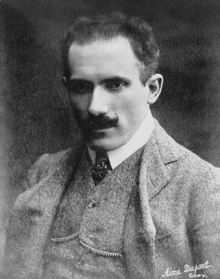1. The vacancy belongs to the orchestra. In no way is it the property of the public domain. The orchestra is not obligated to fill a position once it has been advertised and we reserve the right not to select anyone at an audition. In my time we have more than once taken over eight years to find the right person.
2. We, the members, know pretty well what we are looking/listening for: we know our collective sound, our musical language, our collective artistic personality. The audition is not therefore primarily a contest between competitors for a gold medal. Much more importantly, we search for the "right" musician, not necessarily only the "best" player.
3. The orchestra decides who is chosen - all musician-members vote on the basis of one musician - one vote. Neither a select audition committee, nor principal players, nor the concerned section and certainly not the conductor controls the audition decision. Tenure is also granted by the orchestra membership alone, based on a secret vote.
Audition Repertoire:
We emphasise solo repertoire, not orchestral excerpts at the audition. If a Mozart concerto exists for the instrument being auditioned then that is mandatory. Otherwise another classical period concerto is expected. Invariably we ask at least for the 1st movement with a cadenza; in a second round a contrasting work of the candidate's choosing. Orchestra excerpts are never requested at violin, viola and cello auditions. For double bass, the winds and brass yes.
We look for strong personalities, powerful musical statements, individual interpretations, in addition to beauty of tone, stylistic knowledge, technical skill, etc. The concerto is the centre of the audition, not just a warm-up piece.
Audition procedure:
The section with the vacancy reviews all applications and democratically selects between 10 and 16 candidates who will be invited to an audition in front of the orchestra. If a high number of qualified candidates makes it necessary, a pre-audition may be held the day before. This is open to the whole orchestra but is not mandatory; usually only the concerned section is out in force.
No screens are used. We want to learn as much as we possibly can about the candidate in the short time they are on stage. One can "see" a lot by observing body language and stage presence.
We have frequently used a kind of "shoot-out" procedure at winds and brass auditions. Typically two to four "finalists" are on stage together and we have them perform excerpts in each other's presence. Although this is a brutally effective way of testing the candidates' nerves, more importantly it is also an extremely effective way for us to compare and contrast, with profound immediacy, the sounds and approaches of similarly qualified candidates.
The music director is free to attend if he wishes, and is granted a single vote like every one else.
Probation:
Can last one to two years, after which the concerned section makes a recommendation to the whole orchestra. The final decision is however made in a secret ballot of the orchestra membership. This is the most testing time for a new player and in the recent past fully one third of the probationary musicians were not accepted into the orchestra. This the time when, if necessary, we must fix any hiring mistakes WE may have made!"
Several aspects of the Berlin audition procedure caught my attention. First of all, the typical audition in Berlin, instead of resembling a cattle call, features 10-16 audition candidates who are evaluated by the entire orchestra! (This is the complete opposite of the typical U.S.audition which features many, many candidates who are judged by a tiny committee.) The Berlin Philharmonic emphasizes solo repertoire, not orchestral excerpts in its auditions. (It's about how the musician plays rather than how much time the musician has spent obsessing over a few isolated orchestral passages taken out of context!) But to me, most intriguing of all is the Berlin Philharmonic "shoot out":
"We have frequently used a kind of "shoot-out" procedure at winds and brass auditions. Typically two to four "finalists" are on stage together and we have them perform excerpts in each other's presence. Although this is a brutally effective way of testing the candidates' nerves, more importantly it is also an extremely effective way for us to compare and contrast, with profound immediacy, the sounds and approaches of similarly qualified candidates."
Yes, at first glance, this may seem brutal. But it's not that different from performing orchestral solos within the orchestra, surrounded by one's colleagues, including those who play the same instrument.....and it's a situation commonly faced by college students whose professors insist on regular performance in front of peers. Summer music camps like Interlochen feature weekly challenges in front of peers.
I think the "shoot-out" makes great sense. When I was a student at the School of Orchestral Studies during high school, the Philadelphia Orchestra's then principal bassoonist Bernard Garfield arranged for the 5 bassoon students to audition "shoot-out" style to determine which one of us would play 1st bassoon on Mahler Symphony No.1. Mr.Garfield was unable to attend the shoot-out, but there was a panel of judges in place as we each played the 3rd movement solo in front of one another. (Guess who won?)
The audition committee surely benefits from the shoot-out, since it makes back-to-back comparisons possible. It's in everyone's best interests for the audition committee to have maximum information to increase the likelihood that a sound and lasting decision can be made.
.





